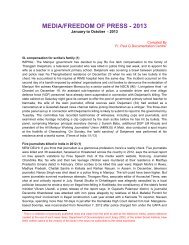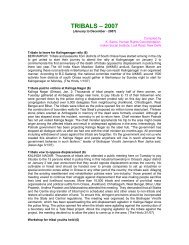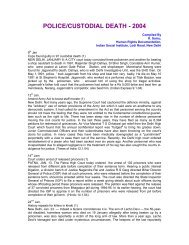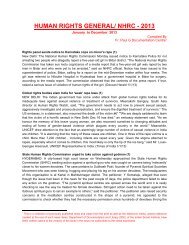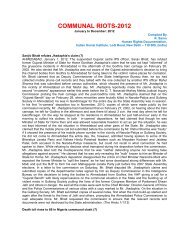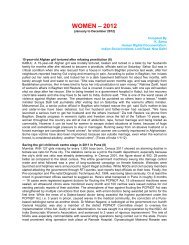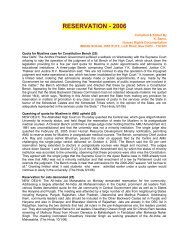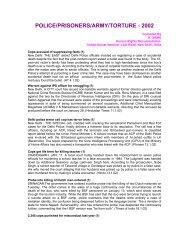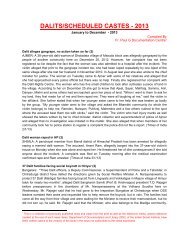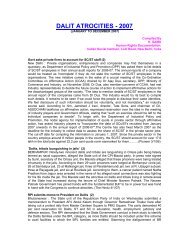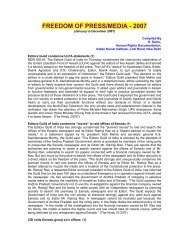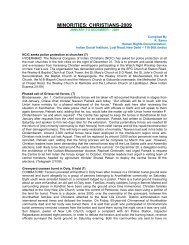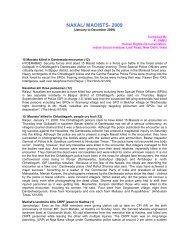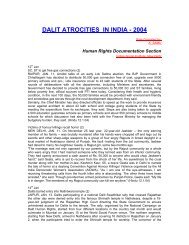Communal Violence and Inter-Community Relations - Indian Social ...
Communal Violence and Inter-Community Relations - Indian Social ...
Communal Violence and Inter-Community Relations - Indian Social ...
Create successful ePaper yourself
Turn your PDF publications into a flip-book with our unique Google optimized e-Paper software.
COMMUNAL VIOLENCE AND INTER-COMMUNITY RELATIONS 37<br />
Memory serves as both a phenomenological position of identity <strong>and</strong> a<br />
carrier for overt identity construction. As memory emerges into<br />
consciousness, eternalized <strong>and</strong> increasingly objectified, it depends on<br />
cultural vehicles for its expression. In building connections between the<br />
past <strong>and</strong> the present, between who we are <strong>and</strong> what others perceive us<br />
to be, narratives or stories dug from the past have a very important<br />
contribution.<br />
One important aspect of memory indicates what people remember.<br />
Halbwachs (1980) argued that what we choose to remember derives<br />
from the social arena which people always inhabit when they remember.<br />
He therefore introduced the term collective memory (memoires<br />
collective). Halbwachs (1992) stressed how strongly social processes<br />
influence not only people’s personal memories of their own lifetimes,<br />
but also a community’s shared memories of the past. Such collective<br />
memories are crucial for the identity of groups such as families, believers<br />
<strong>and</strong> followers of a religion, or social classes (Halbwachs 1992). James<br />
Young should join in here (1992) to remind that we should rather speak<br />
of collected memory rather than collective memory.<br />
The nature of the networks within a particular place or grouping is of<br />
fundamental importance when making judgements about community as<br />
a space <strong>and</strong> community as feeling of solidarity; <strong>and</strong> the extent to which<br />
people can find shared spaces within them. Ability to <strong>and</strong> availability<br />
of opportunities to connect to others <strong>and</strong> interact with them widens the<br />
possibility of a broad spectrum of community. However, shared histories<br />
in shared spaces have been one of the most important casualties in<br />
recent times in the process of othering whereby an adversarial identity<br />
is superimposed on them without their approval <strong>and</strong> consent.<br />
Manufactured superiority <strong>and</strong> imposed inferiority on to others further<br />
complicates community life in locales where familiarity <strong>and</strong> unbridgeable<br />
social distance can happily go with each other.<br />
It shall not be an exaggeration to underline that people <strong>and</strong> communities<br />
do not always form opinion about the self (us) <strong>and</strong> others on the basis<br />
of their own personal encounters <strong>and</strong> experiences but, more often the<br />
guide for interaction comes from above, from distant quarters with or<br />
without the consent of the receivers. Such freely rented experiences<br />
have added to the make-up <strong>and</strong> hardened postures of beliefs <strong>and</strong> a<br />
subsequent take on “self” <strong>and</strong> “others”. The images of hurt <strong>and</strong> distress



